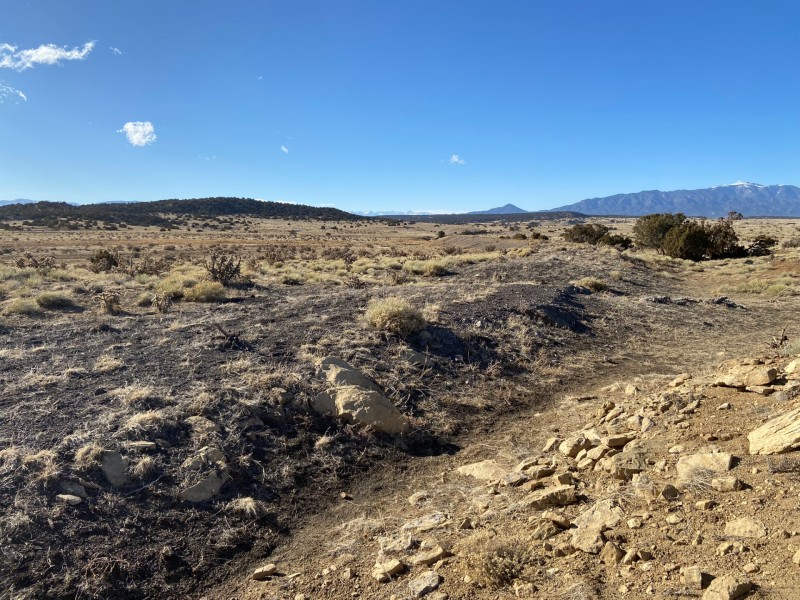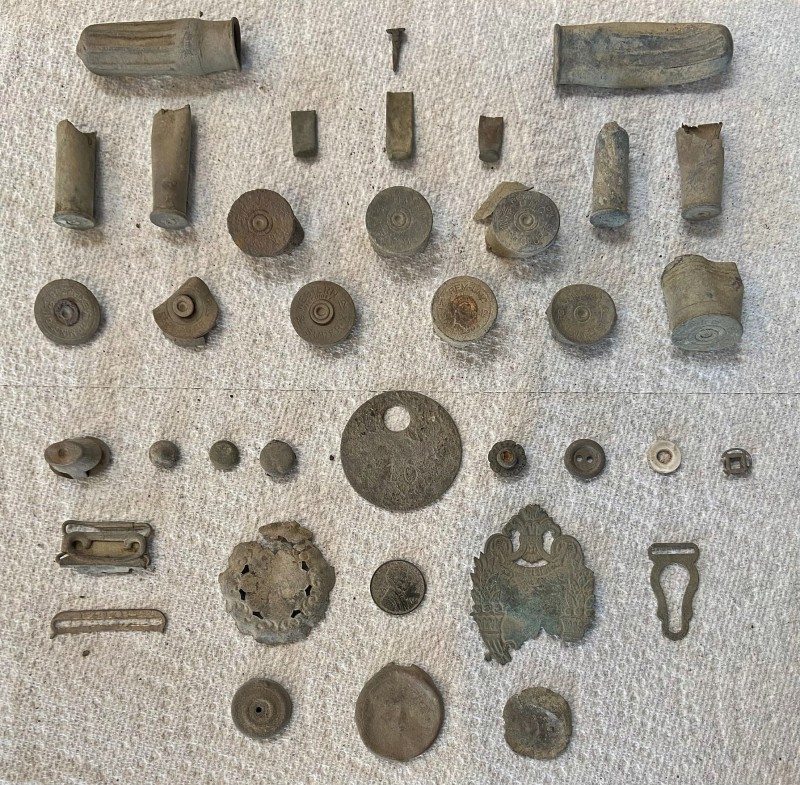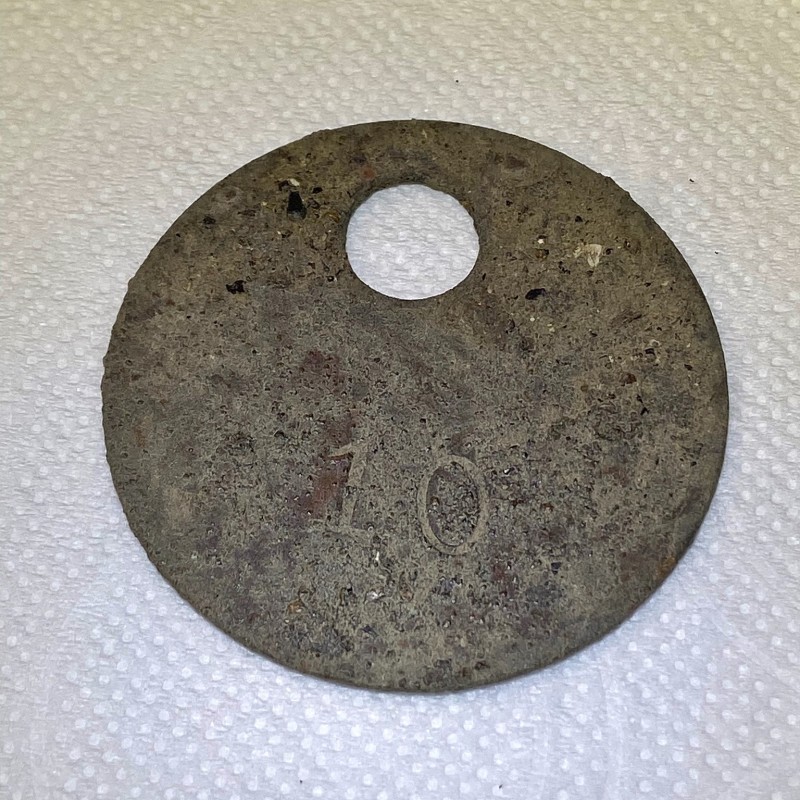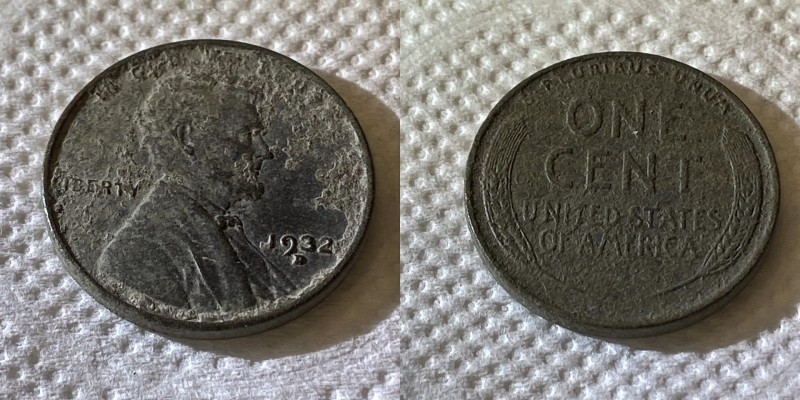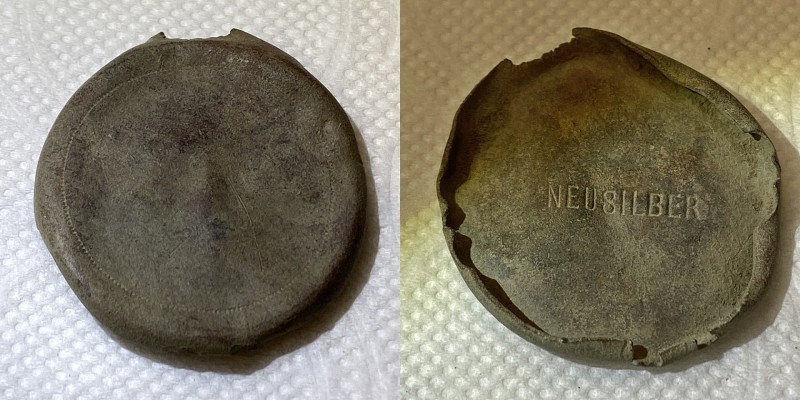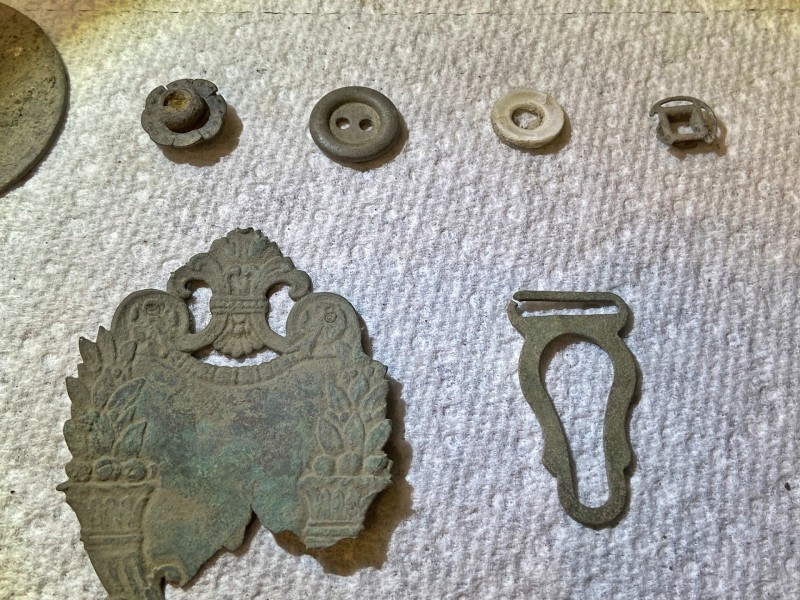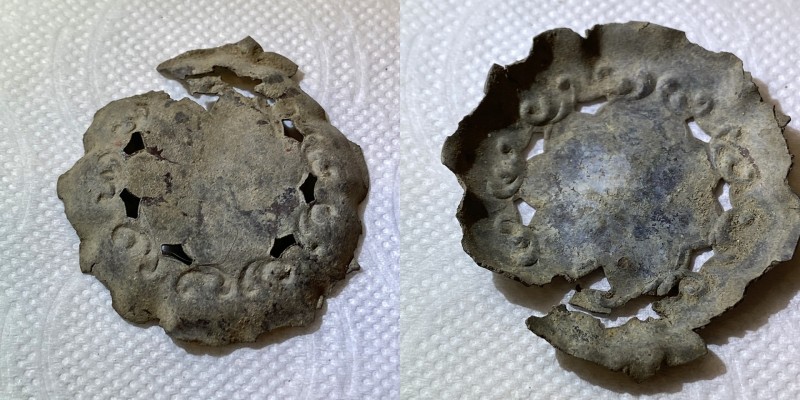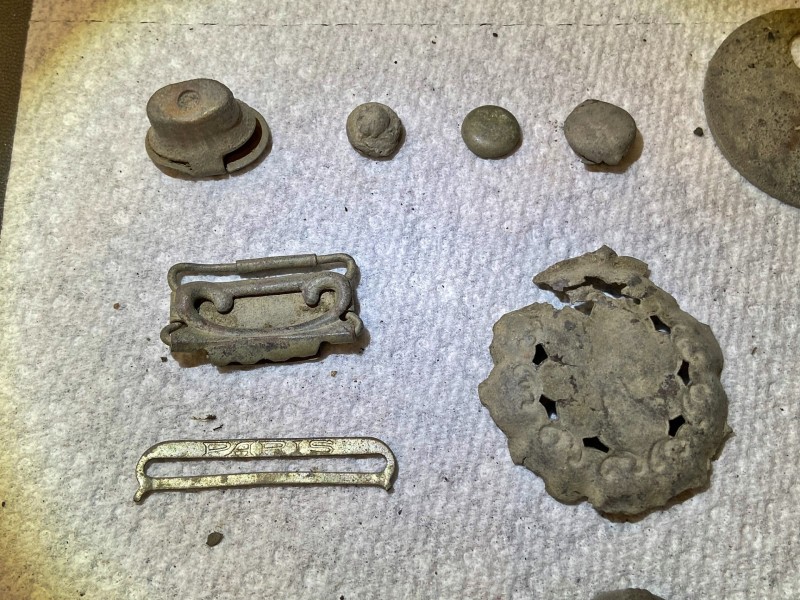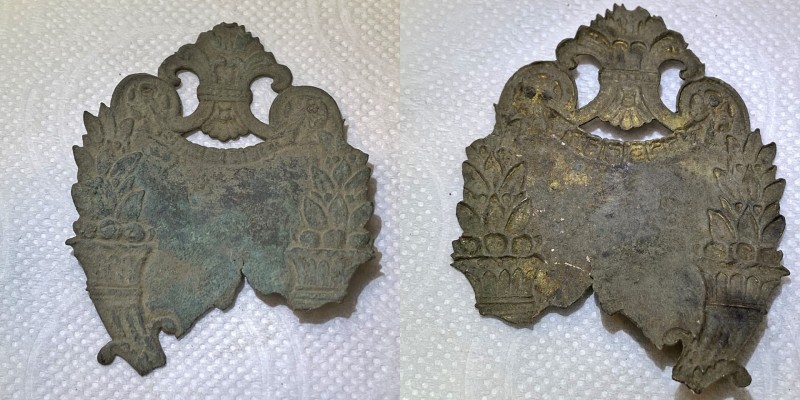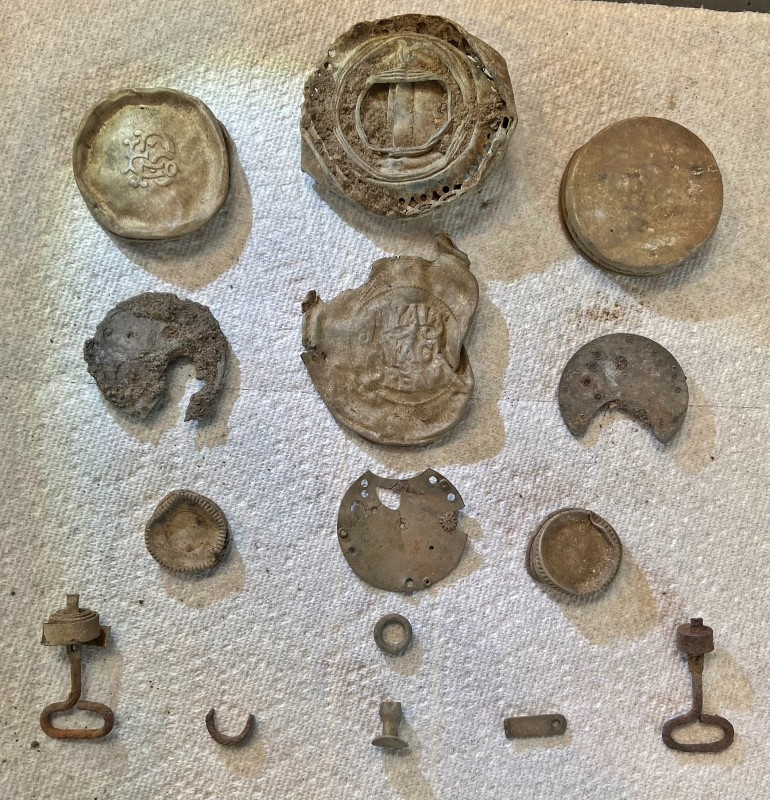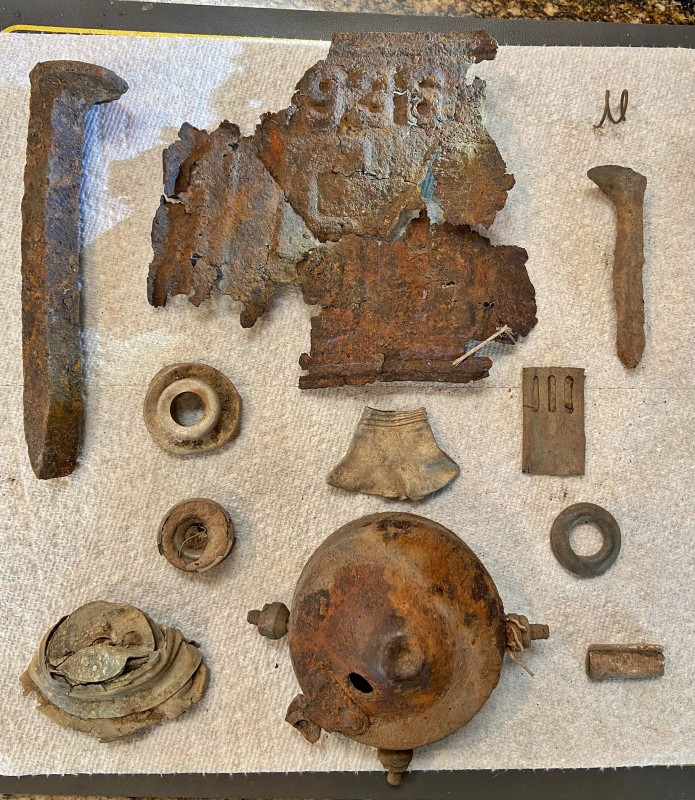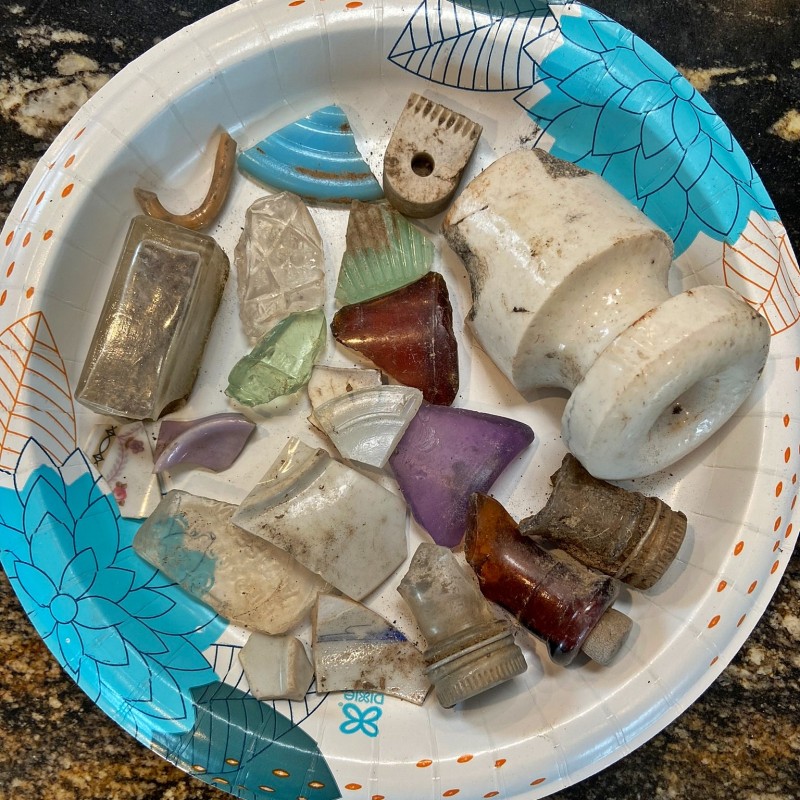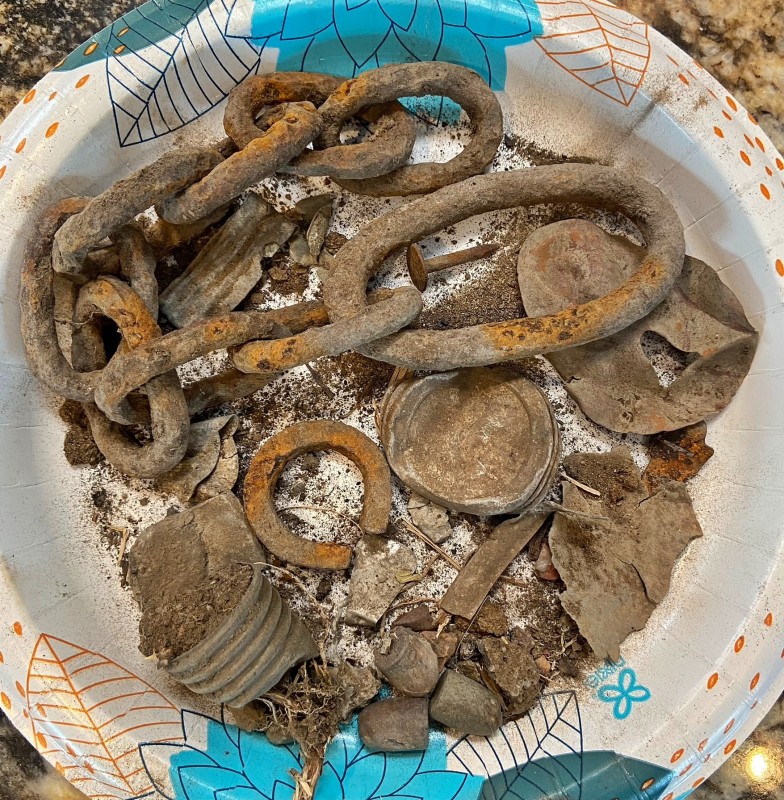-
Posts
1,931 -
Joined
-
Last visited
Content Type
Forums
Detector Prospector Home
Detector Database
Downloads
Everything posted by CPT_GhostLight
-
On The Relic Trail
CPT_GhostLight replied to CPT_GhostLight's topic in Metal Detecting For Coins & Relics
Thank you for the information on the coin, GB_A! The rails and ties are long gone from this track and from the looks of the things I was finding, I think it must have been in decline by the time of the depression. -
Great finds again, F350, keep 'em coming!
- 36 replies
-
- coin found
- relic found
-
(and 1 more)
Tagged with:
-
I've been trying to improve my relic hunting chops since I detected my first ghost town a little over a year ago. For a relatively new detectorist, it was a daunting experience, but I managed to make a couple of cool finds and was instantly hooked on relics. Hunting in "machine gun iron" is not for the faint of heart and I was mentally and physically exahausted after my first relic hunt. At that time I was using my Nox 800 with the 11" coil and it was absolute chaos in the headphones. Fortunately I had just received the Coiltek 10x5" coil and put that on and it was like night and day. That combination made the hunt manageable and was my first dip into the concept of separaration. Previously, I had just swung around in parks and would make an occasional good find but was completely oblivious to what I was missing. As relic hunters know, separation is king. I got the Deus II last Spring largely because of it's reputaion of being able to separate well in iron. Of course the first thing to do was to learn the machine and learn how separating works on it. Learning basic operation of the D2 has been relatively easy, but learning the intricasies is where the learning curve is and I've been working hard on that. While I'm not to the end of that curve, I'm making some progress and it's starting to to show in the field. Case and point is a hunt I did a little over a week ago when I followed the relic trail far enough to escape some of the frozen ground between the weekly snow storms. The site was pretty clear of snow but the wind was howling, but the hunt must go on! Following a railroad track, I came upon the scattered remains of a foundation. The iron in the ground was intense but I started turning up some personal artifacts and indications that there was a house or possibly hotel or gaming house at the location. I have been trying to learn how to hunt by ear to be able to hear the differences in target sounds and while it's a work in progress I was able to hear some important differences. The best representaion of that was the 1932 wheat penny I found about 7 inches down in a veritable bed of nails. I was able to distinguish the penny sound mixed in with the nail grunts and falsing high tones. The ID showed a flashing mix of high and low numbers and if I was depending on that I would have passed it by, but I could hear the penny sound so I dug it. That ended up bing the only coin I found but I did find some other interesting items including a miner's tag, suspender clips, a stocking clip, a small flower desing snap button, a metal 2-hole button, some smaller snap buttons, a couple of ladies brooches (one still has some gilding on the back), ladies face cream jar lids (circa 1890s-1920s), part of a 1936 license plate, and a back of a Victorian ladies watch marked "Neusilber", which is German nickel-silver. Unfortunately nickel silver has no silver in it, it's an alloy of copper, nickel, and zinc. So while they're not necessarily jaw dropping finds, to me they're pieces of the history of lives lived long ago and possibly more clues to even bigger finds.
-
Nice Day For Relics - Guest Appearance
CPT_GhostLight replied to F350Platinum's topic in Metal Detecting For Coins & Relics
Your finds are not boring to me. I love seeing all the history you unearth and there's something about that stirrup that caught my eye. I look forward to your farm hunting tutorial too! BTW, if you want to post it, I'd love to see a photo of the sword.- 7 replies
-
- coin found
- relic found
-
(and 1 more)
Tagged with:
-
Nice Day For Relics - Guest Appearance
CPT_GhostLight replied to F350Platinum's topic in Metal Detecting For Coins & Relics
Wow, congrats again, F350, very cool finds and that stirrup look very old. Well done!- 7 replies
-
- coin found
- relic found
-
(and 1 more)
Tagged with:
-
Great photos, strick, but what's wrong with the ground there, it just opens up when you tap it with a pick? And what's that funny color all over the ground? Oh, wait... I remember now, thats called green... I've seen that before... long ago. 🤣 But seriously, great finds and hunt, well done!
-
Well congrats on the Barber, Buffie, IHP, Wheaties, and the Silver & Gold! It looks like some great hunts to me, Zincoln, specailly this time of year. Well done!
- 10 replies
-
- gold found
- jewelry found
-
(and 1 more)
Tagged with:
-
The Best Metal Detector Out There
CPT_GhostLight replied to Chase Goldman's topic in Metal Detector Advice & Comparisons
What's the phrase... "It's not the tool, it's how well you use it!" -
The Best Metal Detector Out There
CPT_GhostLight replied to Chase Goldman's topic in Metal Detector Advice & Comparisons
I'll bite, the best detector out there for me is the one that works well for me in my hunting conditions right now, one that I feel comfortable with, and makes me a better detectorist. I have had a few detectors over the years and some of them were very good detectors, but none of them were "the best out there" for me because I was inexperienced, impatient, and I wasn't ready or willing to take the time to learn the machines or detecting properly. Years later when I was older, more patient, and ready to learn detecting, I bought what ended up being the "best out there" for me because it performed well and made me want to learn it thoroughly and learn more about detecting. Now I feel I have progressed enough to take on a new more complex "best out there" detector that is working well for me and allowing me to learn even more about detectors and detecting. So I now have two "best out there" detectors, but they're only what is the Best Out There for me at this point in time, in my particular hunting scenarios. As I progress in my learning and as detector technology progresses, there could come a time when I might feel I need a new "best out there" for me detector and regardless of brand I will consider adding it to my other "best out there" for me detectors, but for now I still have much to learn. -
Pandora's Silver Ring
CPT_GhostLight replied to Againstmywill's topic in Metal Detecting For Jewelry
Congrats on the Silver Ring, well done! -
Found My Biggest Gold Ring Ever
CPT_GhostLight replied to Compass's topic in Metal Detecting For Jewelry
Wow, that's an impressive haul, well done! -
Congrats, Jeff, on the silver honker, that's a sweet looking ring!
-
Well dang, F350, you're a Relicstar! I was impressed with that your buffalo nickel had a date, but the King James hammered silver... holy cow!!! What's next, the Holy Grail? If it's anywhere, it's probably in one of your fields! 😆
- 36 replies
-
- coin found
- relic found
-
(and 1 more)
Tagged with:
-
149 Year-old Coin
CPT_GhostLight replied to Againstmywill's topic in Metal Detecting For Coins & Relics
Well there's something you don't find every day, congrats! -
Yes I do like Pitch and use it with a few programs like the Silver Slayer when cherry picking. Pitch works great, but I also want to learn the subtle responses of Full Tones to hear the differences in target conductivity and shape, as well as depth for relic hunting. Yes those small caps are from what we use to call shot bottles. There were also some larger caps and broken bottle pieces which you can see in the last trash photo. The small screw caps are modern, the larger ones are older. I think that place has been a popular drinking spot for a long time. 😉 Thanks, JCR. I did check that area on Historic Aerials. The railroad track was at the eastern edge of town in the 1940s and more houses show up on the east side beyond the track in the 1950s in the aerial phots which only go back to 1940s there. Early 1900s city maps show the same houses on the western edge of the track where they are in the first aerial photo, so I think there were people living next to the track for 120-140 years. Thanks F350. The ring doesn't have any hallmark that I can make out. I think it's plated too, it looks almost a identical to a ring I found at ghost town last Fall. The higher trash count was because I was trying to hunt by ear. I could tell many of the trash targets weren't good by the sound, but I dug them to verify. The iron was eay to tell so I only dug more interesting sounding pieces. I'm really liking Full tones like you suggested, it's got a lot of information going on in there. The hard part is learning to decipher the code, but I'm getting a little better. 😏
-
Wow! How deep was it?
-
18k, 5.5g Wb, 2 Silvers/1.5 Hours
CPT_GhostLight replied to mn90403's topic in Metal Detecting For Jewelry
Gongrats on the silver & gold! Great hunt,well done! -
Testing Gear Today River Beach Hunting
CPT_GhostLight replied to F350Platinum's topic in Metal Detecting For Coins & Relics
Wow, pretty beach! It looks like your WS Master water rig worked flawlessly and you snagged another dream permission, what an awesome day, well done! -
The Deus and Deus II have a reputation for allowing you to hunt by audio only and as I continue to learn my D2, I've been on a mission to train my ears to hear good target sounds and not look at the ID display so much. It's a work in progress for me, but I thank all the more experienced hunters here who have shared their knowledge and tips. It is sinking in and I am getting to where I can apply some of your expertise to my particular hunting sites and conditions. Without getting into my usual long winded detecting stories, I'll say that I've been developing a variation in the Fast program that will allow good unmasking and go deep with good target sounds and separation to use in my mineralized ground. Isn't that what everybody wants? 😉 But I want to be able to use it without having my gaze glued onto the screen all the time. That's the hard part, but it's coming along. I went out to a running trail here in town that was built on top of an old 1800s railroad track that has been gone since the 60s. I wanted to see if I could find any older targets that might be there and if I could hunt more by sound than sight. I ran Fast in Full Tones, PWM audio, Disc at -2.0, no Notch, Reactivity 2, Silencer 2, B-Caps 3, Sensitivity 96 (remember these setting don't work everywhere). This running trail has some benches around it and is loaded with modern park type trash. The cement top of the trail sits on a 4-5 foot mound of dirt covering and following the old RR track. I suspected the dirt mound was original dirt pushed in to cover the tracks after the rails and ties were removed, so I sarted off hunting the slopes along the sides of the trail and finding period targets right away. The cool thing about this program is I could easily tell iron by the sounds and only dug iron targets that I was curious about. Coins sounded like coins so I only glanced at the screen on the Zinc pennies because they sounded good and scratchy at the same time and ID confirmed it. The ring was a great test for audio hunting at this site. There was a bench on a concrete pad on top of the mound next to the trail and I was hitting these little black twist caps everywhere around the bench. They were all a solid 82, fairly shallow, and sounded identical, but after the 4th one I dug, there was a a similar sound, but slightly fainter and more solid sounding if that makes any sense. I checked the screen and it was a solid 82 as well. I figured it was another screw cap, but it was quite a bit deeper into the mound. Imagine my surprise when out popped an old looking ring. I think it's silver or silver plated. So short story long, I'm getting a little better at hearing difference in target sounds on the D2 and I dug 7 identical 82 ID targets together, but one sounded a little different and it was! 🙂
-
Is The Mi-6 Pinpointer VLF Or Pulse Induction?
CPT_GhostLight replied to CPT_GhostLight's topic in XP Deus II Forum
Well out of likes, but thanks for the information and discussion guys. So even if the MI-6 is VLF, it performs exceptionally well in my hot dirt and iron scrap loaded relic sites. It is way more sensitive to tiny targets than my F-Pulse (PI). When I get to a beach, it is usually in east or west coast Florida. In my experiences there, I only use a pinpointer to chase tiny jewelry that slips through the scoop or to locate a target that disappeared in the hole. I previously used the F-Pulse (PI) and ProFind 35 (VLF) and didn't notice a problem with salt or black sand falsing at all, so I would expect the MI-6 would perform the same. So far the only real differences I've noticed between VLF and PI pinpointers is that the PI pinpointers go a little deeper, but the VLFs can hit tiny targets the PI misses. Happy Hunting! 😎 -
Diving Program For High Conductors On The Beach
CPT_GhostLight replied to Steve Andrews's topic in XP Deus II Forum
I'm out of likes, but those are some awesome finds, Steve, and that silver buckle is gorgeous! Well done! -
Is The Mi-6 Pinpointer VLF Or Pulse Induction?
CPT_GhostLight replied to CPT_GhostLight's topic in XP Deus II Forum
I'm not tying to cause drama or challenge anyone's information, I just read conflicting information and was trying to sort it out for my own edification. I haven't had a chance to use the MI-6 on a saltwater beach yet but if it will perform as well as my F-Pulse there then I'm happy. I suspect it will. -
Is The Mi-6 Pinpointer VLF Or Pulse Induction?
CPT_GhostLight replied to CPT_GhostLight's topic in XP Deus II Forum
I own both the MI-6 and the Fisher F-Pulse. The manual for the F-Pulse states: Technology: Pulse Induction, bipolar, fully static Pulse rate: 2500pps, 4% offset adjust Sample delay: 15us The Manual for the MI-6 states: Search frequency 12kHz technology VLF So this is what made me curious about posts saying the MI-6 was PI. Has the MI-6 been changed to PI technology, but the literature has not been updated yet? Or is there a MI-6-II coming out? It's not necessarily a big deal to me as I love my MI-6 and use it exclusively with the D2. I use my F-Pulse with other detectors and as a back-up to the MI-6 with the D2. It does seem to me that the F-Pulse is a bit deeper in my mineralized soil than the MI-6 though. My inquiring mind just want to know. 🙂 -
Two Equinox 900 Coin And Relic Finds
CPT_GhostLight replied to Jeff McClendon's topic in Metal Detecting For Coins & Relics
Great finds, Jeff, well done!


